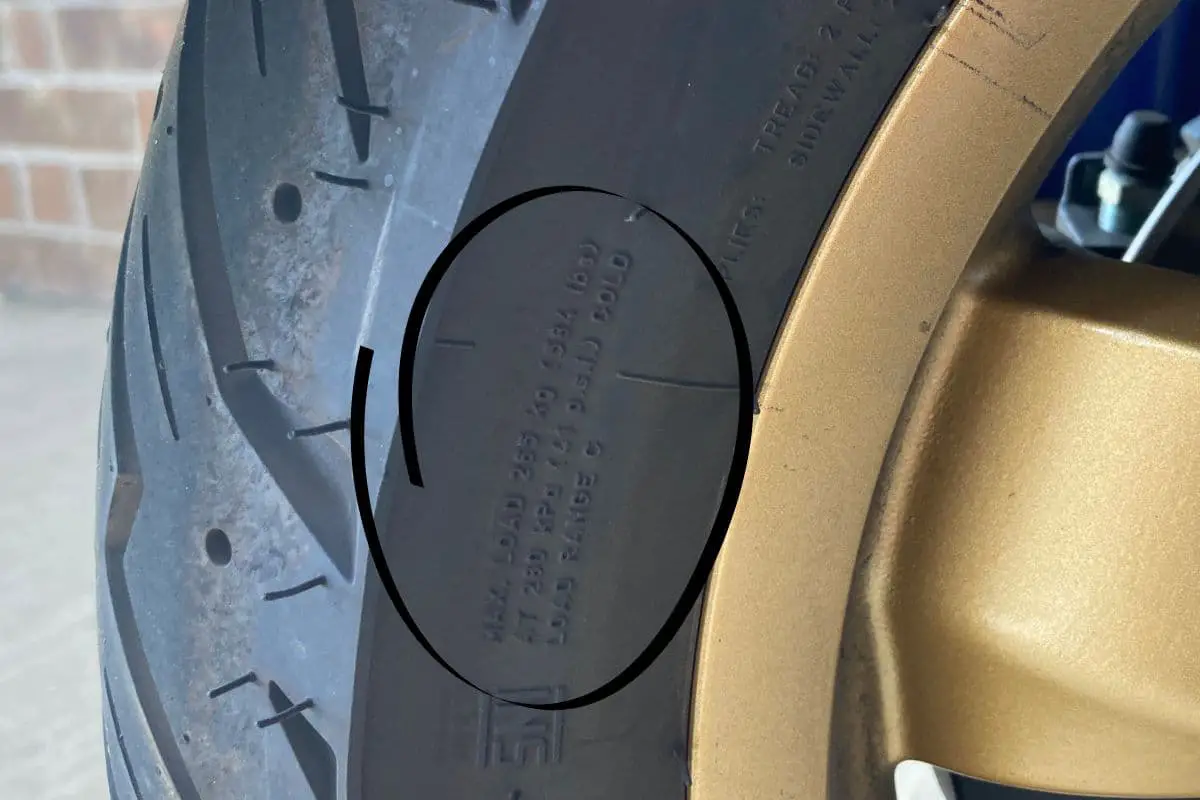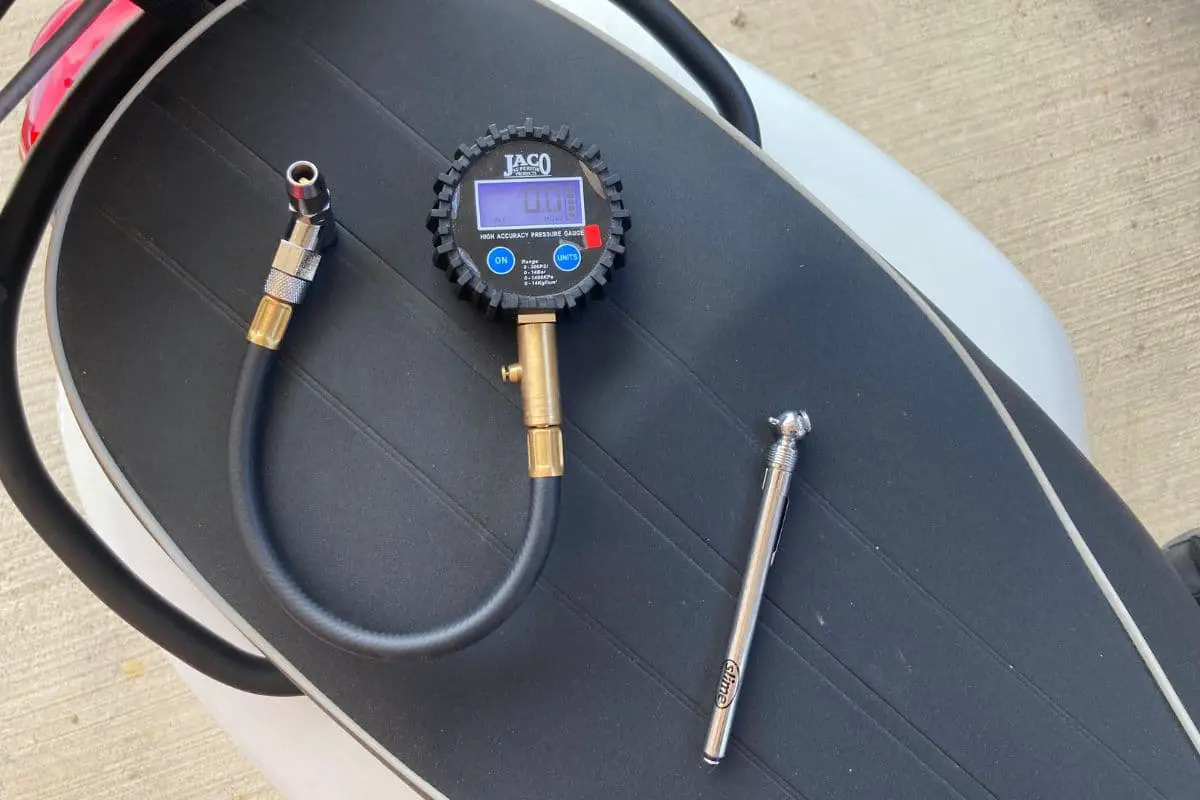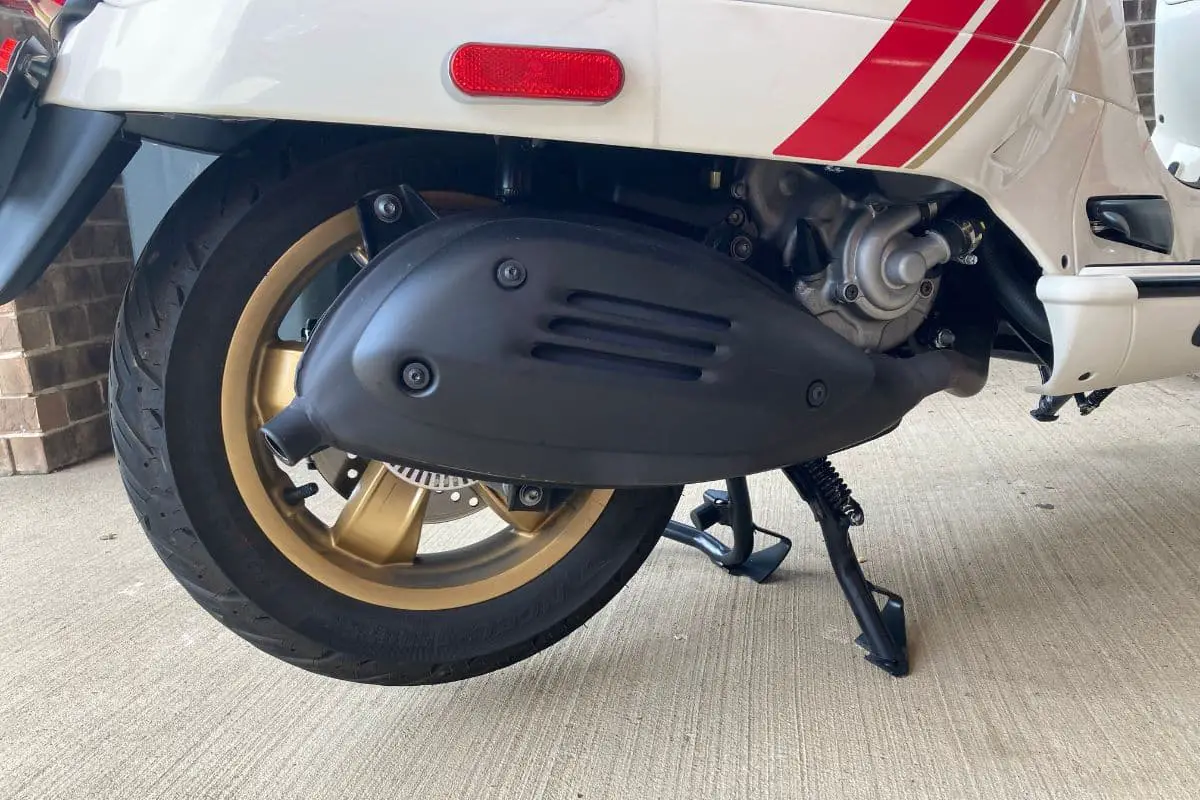A scooter is a powerful two-wheeled vehicle even if you think it’s the equivalent of a bicycle. BUT did you know that your scooter’s efficiency can be reduced when the tire’s pressure isn’t right?
When your scooter tire is gauged correctly and the air pressure is just right, your scooter will run better, maximize its fuel efficiency, be safer, and did I mention it can help you save money in the long run…?!
Check out my favorite tire pressure gauge here
What Is The Importance Of Scooter Tire Pressure?
Scooter tire pressure is an important factor that determines the efficiency of your scooter. Below are some of the reasons you should have a correct and proper scooter tire pressure.
It prevents accidents
When the air pressure of your scooter’s tire is correct and properly gauged, your scooter will stand sturdily on the road and be as efficient as possible.
If the scooter tire pressure is too low, turning in corners can be quite dangerous. On the other hand, if the scooter tire pressure is too high, the tire can burst while traveling at high speed.
It might not be obvious, but tires are engineered just as much as every other element of your scooter. They are designed to have their air pressure maintained, and when they are not, you run the risk of losing control of the scooter.
It saves money
A properly gauged scooter tire will not wear out easily, and hence, you will not need to frequently replace the tires.
This can help you to save up a significant amount of money over the lifespan of your scooter. I’m personally dreading the day I need to deal with a rear tire replacement!
Basically, tires that aren’t inflated right will wear in a way that will require a faster replacement.
Under-inflated tires have too much tire making contact with the ground whereas over-inflated tires aren’t making enough contact with the ground. Where the tire touches the ground is where the wear occurs.
Having the correct scooter tire pressure can save you a lot of money by improving your scooter gas mileage, too. Every little bit adds up!
How To Read A Scooter Tire Pressure
Never assume that your scooter tire air pressure is correct. Eye-balling it fits in this category!
The cost of buying a good tire gauge can be just a few dollars, and it is worth the investment.
The best time to check your scooter tire’s air pressure is before you start riding when the tire is still cold. You will not get an accurate answer if you check your scooter’s air pressure when you are in the middle of a ride.
To check the air pressure of your motor scooter tire, remove the cap on the valve stem and press down on the gauge to the stem. The pressure gauge will tell you your tire air pressure if you’ve done it right.
Now match that with the maximum or range given on the sidewall of the tire. My scooters front & rear PSI standards are the same but they can vary by tire, so check the values for both.

It is best to put the gauge on the the stem at the same angle. If the gauge is not pointing directly towards the stem, a ‘seal’ won’t happen, and it will keep making a hissing noise. The hissing noise means that you’re not only getting a faulty reading, but you’re also letting air OUT. This takes me a few tries sometimes.
If the air pressure falls below normal and you need to add air, you can do that by using a foot pump, air compressor, or going to a service station to get it done.
Tools required to read a scooter tire pressure
You only need 1 thing to check your scooter tire pressure. You need to add 1 more thing if you need to actually add air.

- A source of air: This can be a bicycle pump or an air compressor – at home or at a gas station even.
- A tire gauge: This will help you read the tire’s current air pressure level. It is not expensive, and it cost only a few dollars.
I do find that the valve stems on a scooter are more ‘flexible’ than a car version, so the inexpensive gauges really cause me some grief getting a good read. This is even more true when I’m checking the rear tire around parts of the scooter.
This is my favorite gauge as I don’t struggle to get a good seal & an accurate read with it.
Check the price on Amazon here
What PSI Should Vespa Tires Have?
Normally, scooter manufacturers have written the standard amount of pressure that a scooter tire must have either on the side wall of the tire.
Scooter tire air pressure is measured in PSI. The full meaning of PSI is Pounds Per Square Inch.
This can take a minute to hunt down, but you’re looking for text that describes the PSI. I put my scooter on its center stand, and roll the rear tire around slowly until I find it.

Generally, the tire air pressure of scooters varies with the brand of the tire. That is why you should not assume that since your old scooter has a certain air pressure, then your new scooter, which is of a different brand, will have that same air pressure value.
Also, note that the air pressure for the front tire can differ slightly from that of the rear tire.
The recommended air pressure for a Vespa scooter’s front tire is 20PSI, while that of the rear tire is 26PSI. Other scooter brands have air pressure that differs slightly from this, but ignore this site here – CHECK THE TIRE TO BE SAFE!
Other Checks
When you are doing a routine check of your scooter, the tire’s air pressure is not the only thing you should check. It would be best to examine some other things – even if just quick visual checks.
We’re all about a fun yet safe ride here, so take a glance at these things while you’re at the tire level.
Tire condition
The tire’s condition is something you should check every time you check your tire’s air pressure. Check the side of the tire to see if there are any bulges. If you notice bulges at the side of your scooter’s tire, it isn’t safe to ride & will need to be replaced as soon as you can.
The tread-wear should be even across the tire. Once you notice that the tread is thinner, check the state of the tread with a tread-wear gauge and replace it as necessary.
Wheel nuts
It would be best if you regularly check your scooter wheel nuts to make sure none are missing or broken. Remember that the scooter is a two-wheeled vehicle, so it’s safe to say that you can’t afford a wheel to drop off while riding.
Final Words
It might seem mundane, but seriously – keeping your scooter’s air pressure where it needs to be just makes sure that you have a safer ride and you keep from having to replace your tires sooner than you’d prefer.
Oh & keeping your tires properly inflated definitely helps optimize your fuel efficiency. Who doesn’t want to save money on gas and the environment?!






